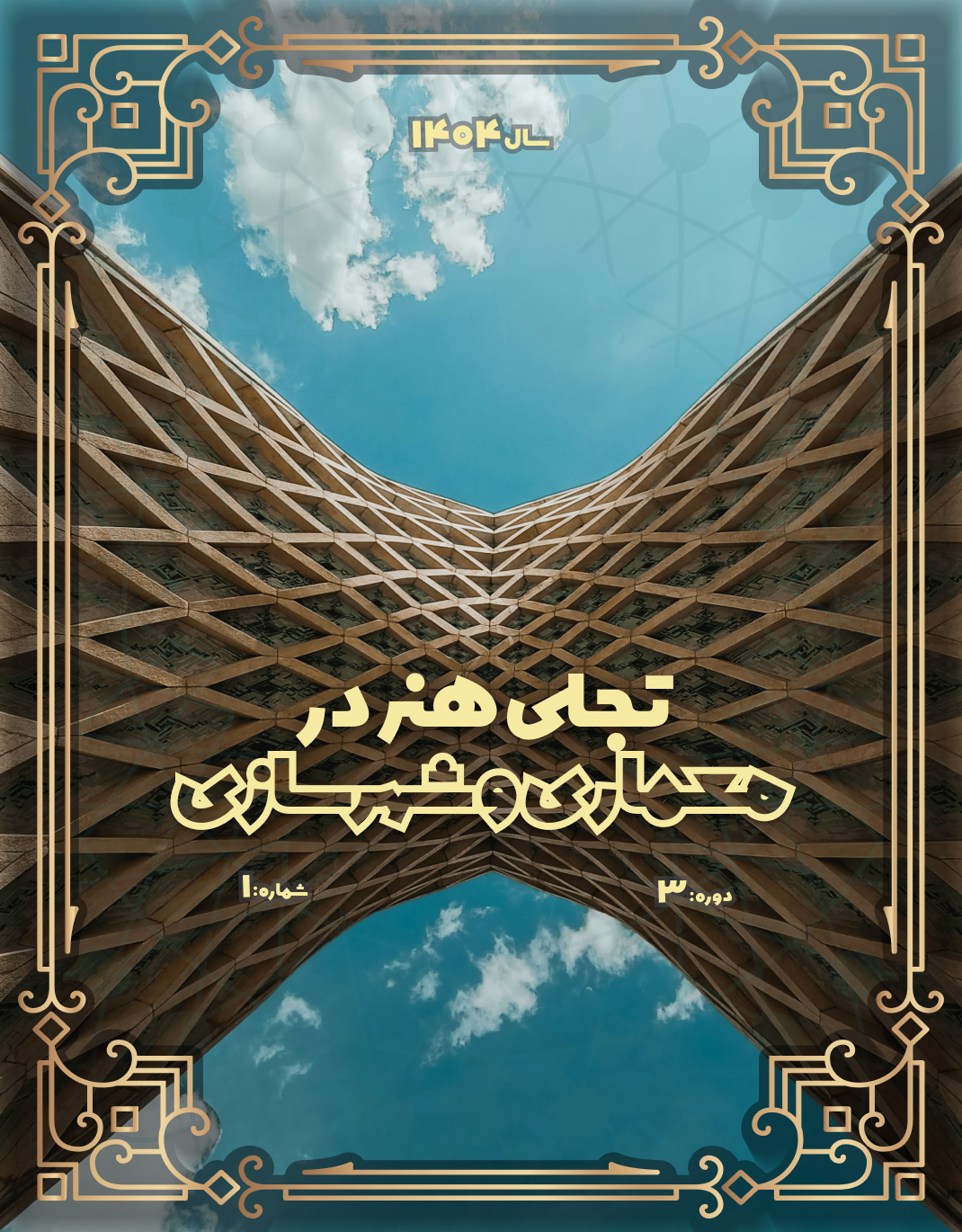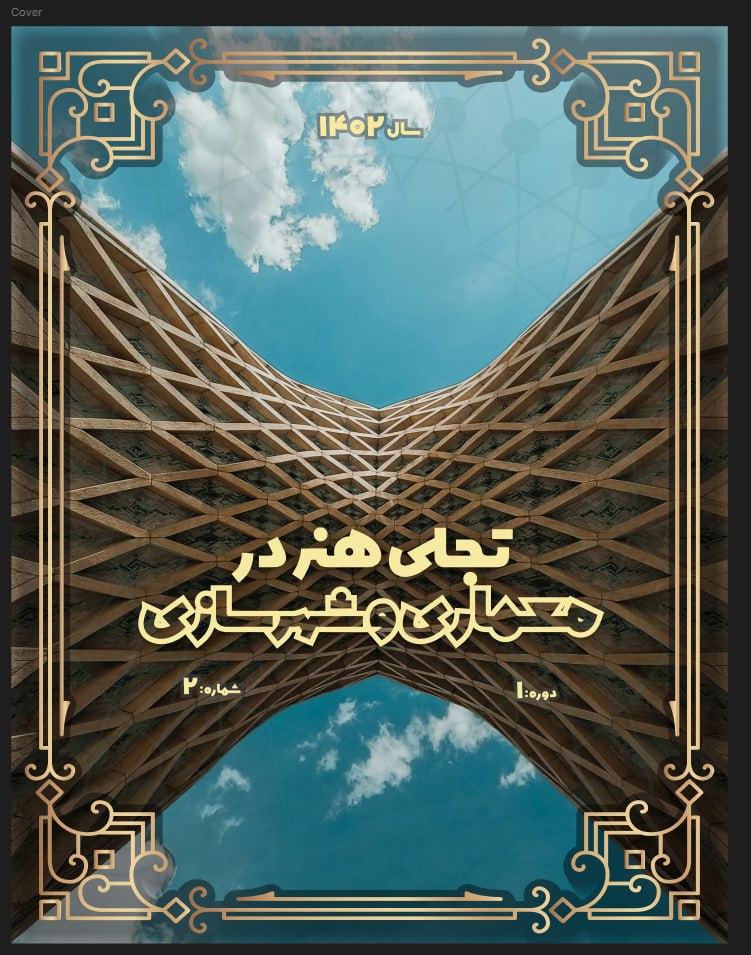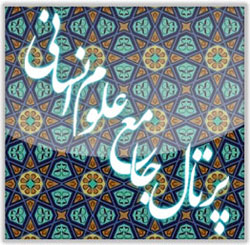اعتبارسنجی پرسشنامه طراحی مجتمعهای اقامتی-گردشگری دوستدار طبیعت بر اساس معماری ارگانیک (نمونه موردی: شهر سنندج)
کلمات کلیدی:
اعتبارسنجی, پرسشنامه, طراحیچکیده
هدف این پژوهش، طراحی و اعتبارسنجی پرسشنامهای جامع برای سنجش مؤلفههای مؤثر در طراحی مجتمعهای اقامتی-گردشگری دوستدار طبیعت بر پایه اصول معماری ارگانیک در شهر سنندج است. این پژوهش از نوع کاربردی و با رویکرد کمی و همبستگی انجام گرفت. جامعه آماری شامل کارشناسان معماری و شهرسازی و متخصصان حوزه گردشگری شهر سنندج بود. حجم نمونه با استفاده از جدول کوهن (1992) و روش حداقل مجذورات جزئی تعیین شد و در مجموع 404 پرسشنامه قابل تحلیل گردآوری گردید. ابزار پژوهش، پرسشنامه محققساختهای با 20 شاخص در چهار مؤلفه خلق فضای معنادار، پایداری محیطی، اقتصاد پایدار و فرهنگ پایدار محلی بود. دادهها با استفاده از مدلسازی معادلات ساختاری و نرمافزار Smart PLS3 تحلیل شدند. روایی و پایایی ابزار با شاخصهای آلفای کرونباخ، پایایی ترکیبی، روایی همگرا (AVE) و واگرا (فورنل-لارکر) ارزیابی گردید. نتایج نشان داد تمامی ضرایب اثر مؤلفهها در مدل معنادار بودهاند (p<0.001). مؤلفههای خلق فضای معنادار (β=0.949, t=209.724)، پایداری محیطی (β=0.931, t=175.831)، اقتصاد پایدار (β=0.968, t=391.515) و فرهنگ پایدار محلی (β=0.929, t=147.201) بیشترین تأثیر را بر طراحی مجتمعهای اقامتی-گردشگری دوستدار طبیعت داشتند. شاخصهای روایی همگرا (AVE>0.7)، پایایی (CR و CA>0.7)، و تناسب پیشبین (Q²>0.35) در سطح بالا تأیید گردید. همچنین، شاخص نیکویی برازش مدل (GOF=0.670) بیانگر برازش قوی الگو بود. یافتهها تأیید کردند که پرسشنامه طراحیشده از اعتبار و روایی مطلوبی برخوردار است و میتواند بهعنوان ابزاری معتبر برای سنجش و ارزیابی کیفیت طراحی اقامتگاههای گردشگری دوستدار طبیعت به کار رود. این ابزار ضمن تبیین ارتباط میان ابعاد پایداری زیستمحیطی، اقتصادی و فرهنگی، میتواند در سیاستگذاری و تصمیمگیری مدیران شهری و طراحان معماری در جهت توسعه گردشگری پایدار و حفظ میراث طبیعی و بومی شهر سنندج و سایر مناطق مشابه به کار گرفته شود.
دانلودها
مراجع
1. Pasiori A. Konsep Arsitektur Organik pada Perancangan Kawasan Wisata Permandian Air Panas Buatan di Tombolo Pao. 2025.
2. Aprilia R. Aplikasi Konsep Arsitektur Organik Menurut David Pearson pada Perancangan Hotel Wisata di Danau Tempe. 2025.
3. Raeisi Nejad AA, Mirhoseini SM, jahanbakhsh H. Study the Relationship between Architecture Structure of Eco_tourist Residence with Tourist Satisfaction (Case Study:Residence of Janat Rudbar Village, Ramsar, Mazandaran Province). Journal of Tourism and Development. 2021;10(1):81-94.
4. Tran D, editor Organicism and an enviro-organic form integrating to the built environment2018.
5. Sha'bani Nia M, Bahadorifard H, Dehghani A. Evaluating Organic Architecture with a Look at the Works of Frank Lloyd Wright and Alvar Aalto. 2023;9(3):143-50.
6. Bystrova E, editor Concept of Organic Architecture in the Second Half of the XXth Century in the Context of Sustainable Development2019.
7. Kim J, Park K. Design Characteristics of Nature-Inspired Architecture. 2018.
8. Ramón CM, Caballero JL, Segarra E, Guapi F, López C, Yaulema Brito LM. The natural landscape as a strategic element in nature tourism management. Revista de Gestão Social e Ambiental. 2024;18(8):1-20.
9. Chan WC, Wan Ibrahim WH, Lo MC, Mohamad AA, Ramayah T, Chin CH. Controllable drivers that influence tourists' satisfaction and revisit intention to SemenggohNature Reserve: The moderating impact of destination image. Journal of Ecotourism. 2022;21(2):147-65.
10. Metwally E. Use Energy Efficiency, Eco-Design, and Eco-Friendly Materials to Support Eco-Tourism. Journal of Power and Energy Engineering. 2019;7(12).
11. Blau ML, Panagopoulos T. Designing healing destinations: A practical guide for eco-conscious tourism development. Land. 2022;11(9):1595.
12. Yuliani S, Setyaningsih W. Green architecture in tourism sustainable development a case study at Laweyan, Indonesia. Journal of Asian Architecture and Building Engineering. 2023;24(1):27-38.
13. Oliynyk O, Amandykova D, Konbr U, Eldardiry D, Galina Zhaina T. Converging Directions of Organic Architecture and City Planning: A Theoretical Exploration. ISVS e-journal. 2023;10(8).
14. Oliynyk O. Converging Directions of Organic Architecture and City Planning: A Theoretical Exploration. 2023.
15. Mortazavi M. Presenting Architectural Strategies and Considerations in Identifying Effective Components for Designing a Tourist Residential Accommodation with an Ecotourism Enhancement Approach. Architecture Studies (Memarishnasi). 2020;3(15):1-8.
16. Alex L, Yong-Jin J, Seongsoo J. Tourism clusters and peer-to-peer accommodation. Annals of Tourism Research. 2020.
17. Emekli G, Baykal F. Opportunities of Utilizing Natural & cultural Resources of Bornova (Izmir) Through Tourism. Procedia-Social & Behavioral Sciences. 2011;19:181-9.
18. Amirgol M, Amirnejad Mozhdehi M, Pourhadi Govabari M, editors. Analyzing the Effective Components in Designing a Recreational Residential Complex with an Eco-Tech Architecture Approach. 8th National Congress on Civil Engineering, Architecture, and Urban Development; 2022; Tehran, Iran.
19. Karimi A, Nouri V, editors. Study and Investigation of Nature-Oriented Architecture in Architectural Design. 5th National Congress on Civil Engineering, Architecture, and Urban Development; 2017: Shahid Beheshti University, Tehran.
20. Kangi Nejad M, Attarian K, editors. Designing a Coastal Recreational Residential Complex with a Nature-Oriented Approach (Case Study: Bandar Lengeh City). 1st International Congress on Purposeful Architecture; 2016.
21. Bamanian MR, Darvishian E, editors. The Role of Organic Architecture in Designing Recreational Residential Environments Coherent with the Tourism Industry. 3rd International Conference on Research in Science and Technology; 2016.
22. Hair JF, Hult GTM, Ringle CM, Sarstedt M. A primer on partial least squares structural equation modeling (PLS-SEM). Thousand Oaks, CA: Sage; 2022.
23. Lee TH, Jan FH, Liu JT. Developing an indicator framework for assessing sustainabletourism: Evidence from a Taiwan ecological resort. Journal of Ecological Indicators. 2021;125(44):2-15.
24. Mahmoudinejad H. Explaining the Educational Foundations of Creativity in Bio-Architecture: Tarbiat Modares University; 2012.
25. Nouri M, Nouri H, Fattahi S, editors. Investigating the Role of Nature-Oriented Architecture in Contemporary Architectural Works. International Conference on Civil Engineering, Architecture, and Urban Development Management in Iran; 2018.
26. Susanto DAN, Diniputi Angelia T, editors. Discovering the Potential of Organic Material in Architecture2018.
27. Ghobadian V. Foundations and Concepts in Contemporary Western Architecture. Tehran: Cultural Research Bureau; 2020.
دانلود
چاپ شده
ارسال
بازنگری
پذیرش
شماره
نوع مقاله
مجوز
حق نشر 2025 Hamidreza Erfani (Author); Mahdi Shabanian

این پروژه تحت مجوز بین المللی Creative Commons Attribution-NonCommercial 4.0 می باشد.










